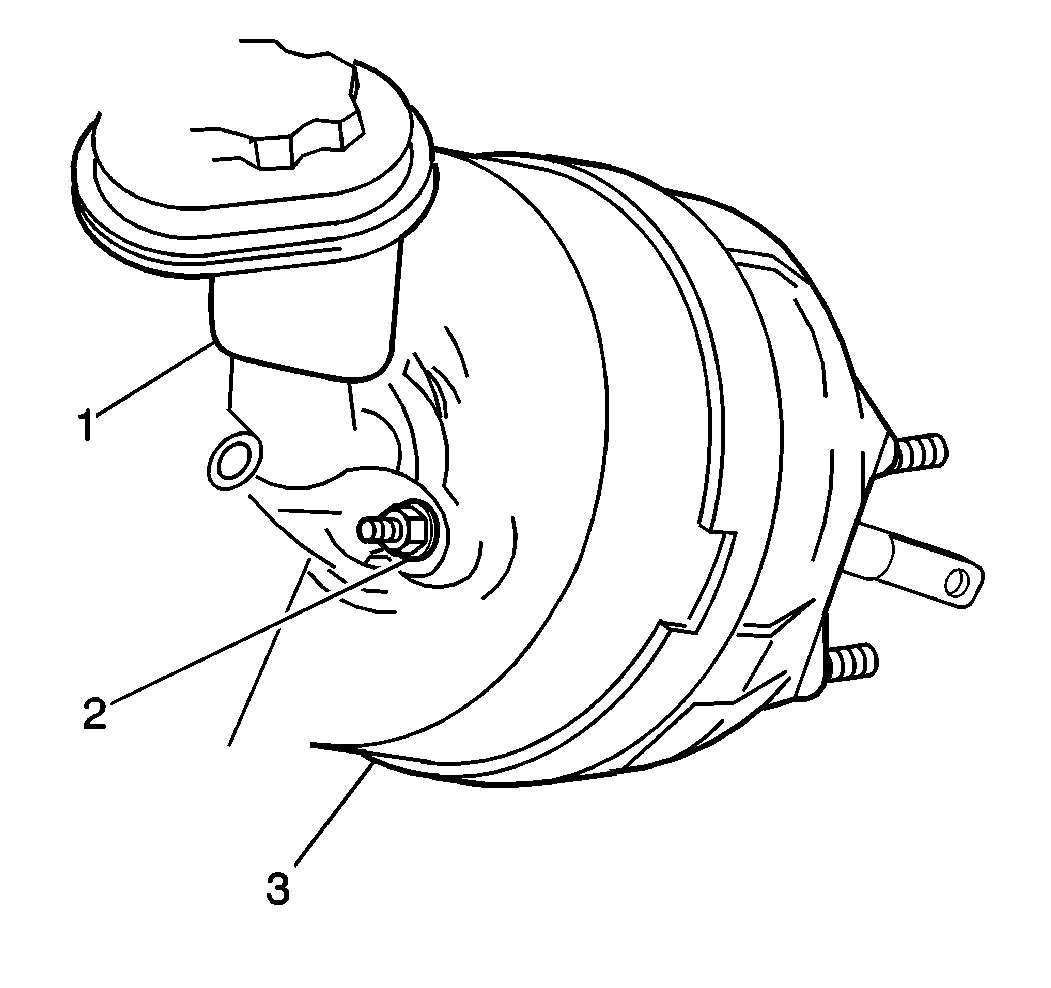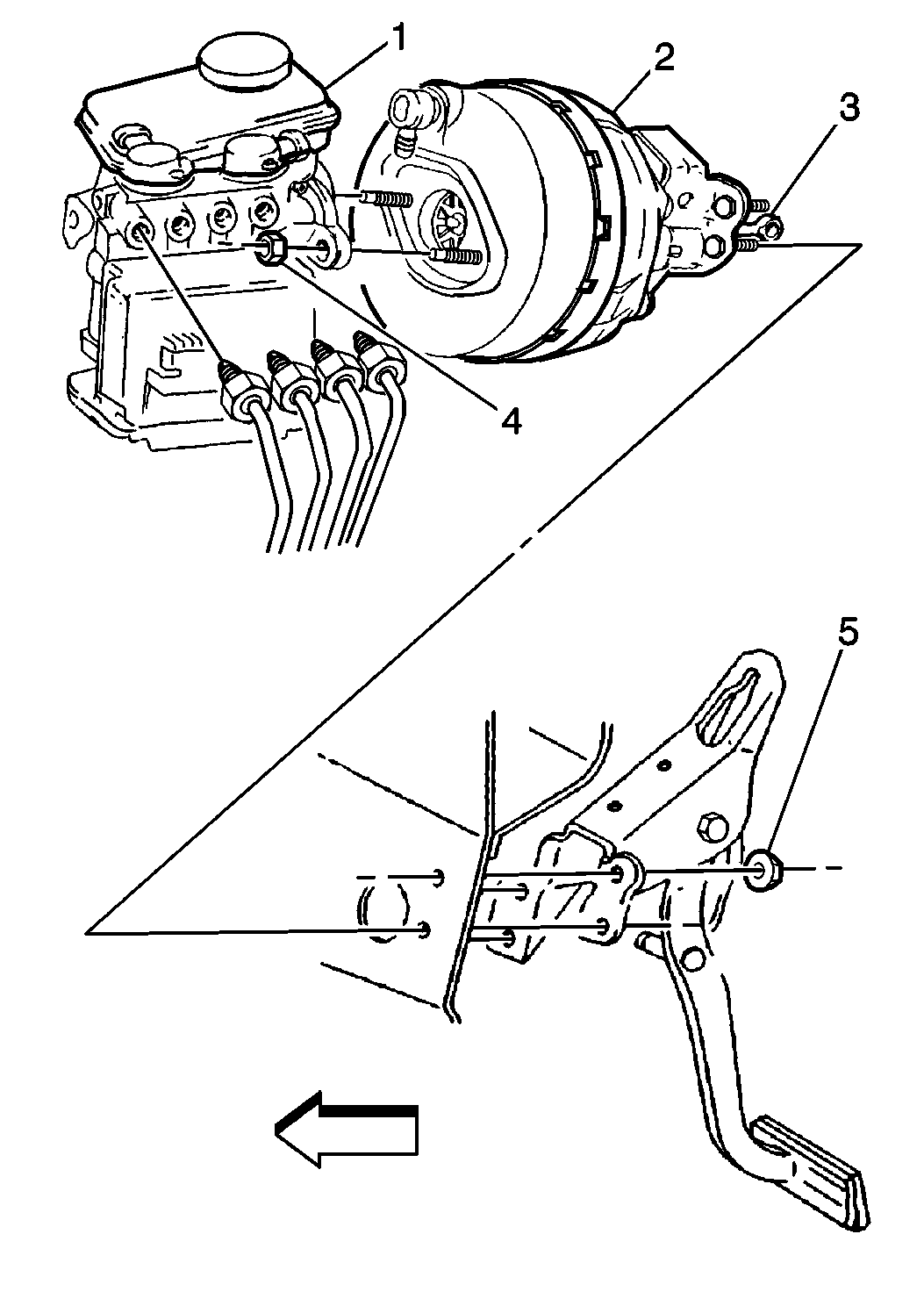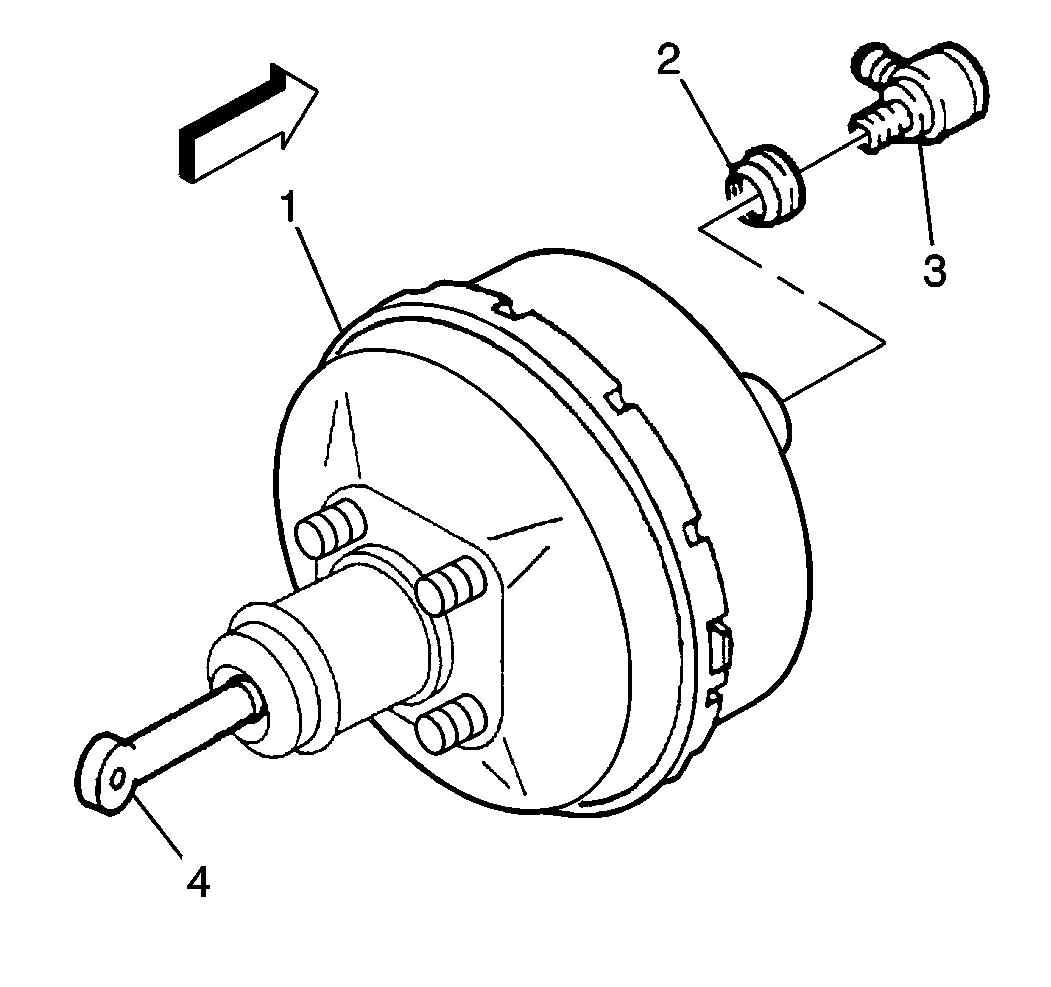Removal Procedure
Caution: Unless directed otherwise, the ignition and start switch must be in the OFF or LOCK position, and all electrical loads must be OFF before servicing any electrical component. Disconnect the negative battery cable to prevent an electrical spark should a tool or equipment come in contact with an exposed electrical terminal. Failure to follow these precautions may result in personal injury and/or damage to the vehicle or its components.
- Remove the air box. Refer to Air Cleaner Assembly Replacement in Engine Controls.
- Remove the master cylinder (1) attaching nuts (2).
- Remove the master cylinder (1) from the booster (2).
- Move the master cylinder (1) forward just enough in order to clear the studs on the vacuum booster (2). This will flex the brake pipes slightly. Do not bend or distort the brake pipes.
- Remove the vacuum hose from the vacuum check valve (3).
- Remove the booster attaching nuts.
- Remove the booster pushrod (3) from the brake pedal.
- Remove the booster (2) from the vehicle.

Important: Do not remove or disconnect the master cylinder from the vehicle in order to remove the vacuum booster. If the master cylinder and the vacuum booster are both being serviced, remove the master cylinder first. Refer to Master Cylinder Reservoir Replacement .



Tilt the entire vacuum booster (2) slightly in order to work the booster pushrod off of the pedal clevis pin without putting undue pressure on the pushrod.
Installation Procedure
- Install the booster (1) into the vehicle.
- Install the booster pushrod (3) to the brake pedal.
- Install the booster attaching nuts (4, 5).
- Install the booster vacuum hose to the vacuum check valve (3).
- Install the master cylinder (1) to the booster (2).
- Install the master cylinder attaching nuts (4, 5).


Tilt the entire vacuum booster (2) slightly in order to work the booster pushrod on to the pedal clevis pin without putting undue pressure on the pushrod.
Notice: Use the correct fastener in the correct location. Replacement fasteners must be the correct part number for that application. Fasteners requiring replacement or fasteners requiring the use of thread locking compound or sealant are identified in the service procedure. Do not use paints, lubricants, or corrosion inhibitors on fasteners or fastener joint surfaces unless specified. These coatings affect fastener torque and joint clamping force and may damage the fastener. Use the correct tightening sequence and specifications when installing fasteners in order to avoid damage to parts and systems.
Tighten
Tighten the booster to brake pedal attaching nuts to 27 N·m
(20 lb ft).

Tighten
Tighten the master cylinder to the booster attaching nuts to 27 N·m
(20 lb ft).
